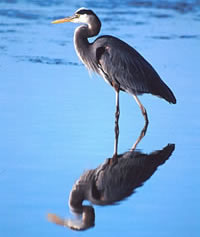After a long hiatus, I am starting up again – and hoping to keep it up.
In this post I will present a couple of pieces of artwork by my niece Sanchari De ("Pooja") – done when she was in her early teens.
BODHIDHARMA CROSSING THE YANGTZE
Bodhidharma floating on the Yangtze by Sanchari De (watercolor)
[Click on picture to enlarge]
Bodhidharma, a great Buddhist master, traveled from India across the forbidding Himalayas to revive Buddhism in China. It was a difficult journey with many obstacles, but somehow he managed it. In China he traveled here and there until he arrived in a village near Nanjing. There he saw a crowd had gathered round a Chinese Buddhist monk named Shengguan, who was preaching there. Bodhidharma joined the crowd. As the Chinese monk was expounding on various thoughts, Bodhidharma instinctively nodded his head in approval or disapproval. The monk saw this, and asked Bodhidharma haughtily why the latter was being so judgmental. Bodhidharma did not want to engage this vain monk in a debate, and quietly left. After this, someone from the crowd told Shengguan: "Don't you know that this is the great Indian monk Bodhidharma?!"
Shengguan felt most ashamed, and ran after Bodhidharma to apologize to the latter. But Bodhidharma was long gone. He soon arrived on the banks of the Yangtze. There he found that there was no way to get across the river – no ferryboats, no dinghies, no one in sight. He looked up and down the river bank, and presently saw an old, decrepit lady sitting close to the shore. She had a sheaf of reed piled up next to her. Bodhidharma approached her and said most kindly: "Esteemed Lady, is there something I can do for you?"
The woman smiled and said: "The proper question is what I can do for you."
Bodhidharma became confused. What could this decrepit woman do for him? As if to answer this thought, the woman took a single reed from the sheaf, and offered it to Bodhidharma: "You want to get across the river, and have no way of doing so. Here, take this reed; lay it on water and step on it. It will carry you safely across."
Bodhidharma did exactly as he was told, without any misgivings. As he laid the reed in water, it seemed to swell to a large log. Bodhidharma stood on it. It plowed through water like a swift boat, and delivered him to the other bank. As Bodhidharma stepped off the reed, it changed to a dragonfly, and flew back to the old lady.
Bodhidharma would go forth from here and do the Buddha's work with great distinction, and step right into history.
Now, the monk Shengguan had by now caught up with Bodhidharma. He was standing at a distance as he witnessed this whole phenomenon. He now came to the old lady, and without even speaking to her, took a reed. He floated it on water and stepped on it. Directly he did so, he fell in the river and nearly drowned. Seething with anger, he came to the old lady and said: "What is the meaning of all this?! I saw that you gave the other monk your magic reed. Why did my reed not work?"
The old lady answered: "That monk came to me, said kind words to me, and showed me respect. You, on the other hand, did not even bother to ask me if you could borrow one of my reeds. You simply stole one. You have not learned the Buddha's way of humility. It is you who should apologize to me."
Shengguan saw the light, and profusely apologized. He then left with his head lowered. But on an afterthought, he turned his head to have another look at the lady. She had disappeared. For she was none other than a Bodhisattva, an incarnate of the Buddha himself.
THE MONK AND THE BUDDHA STATUE
The statue of the Buddha carrying an old monk by Sanchari De (watercolor)
[Click on picture to enlarge]
This is also a story of the power of faith. A very old and frail Buddhist monk resolved to a carry a heavy stone statue of the Buddha a great distance through the woods, to install it in a far monastery. Naturally, it was an impossible task for him, but he did it anyway. The story goes that the monk dragged the statue by fits and starts – a few inches at a time. Then at night, when no one was looking, the statue carried the monk great distances.


